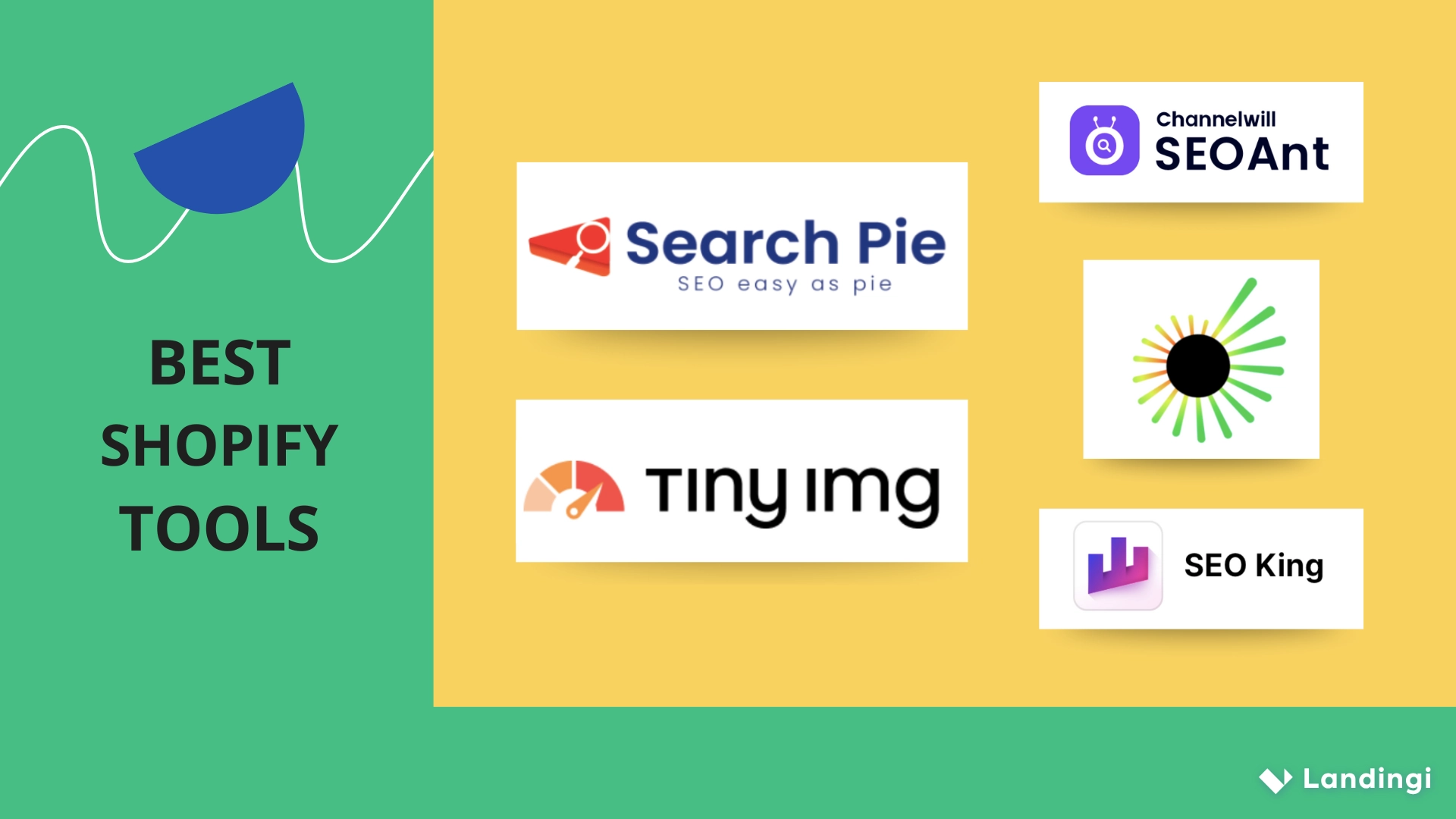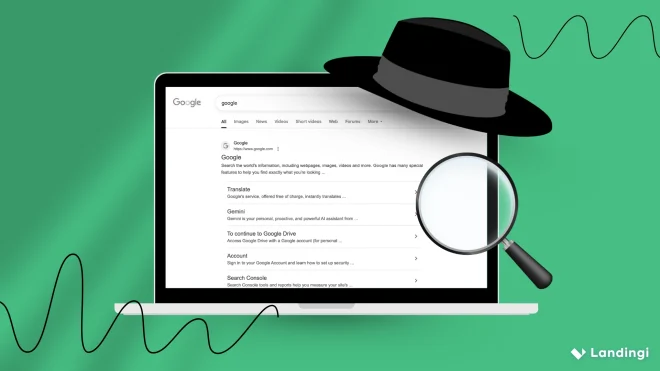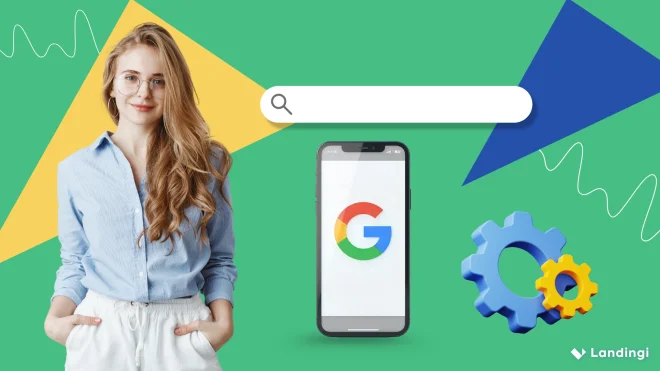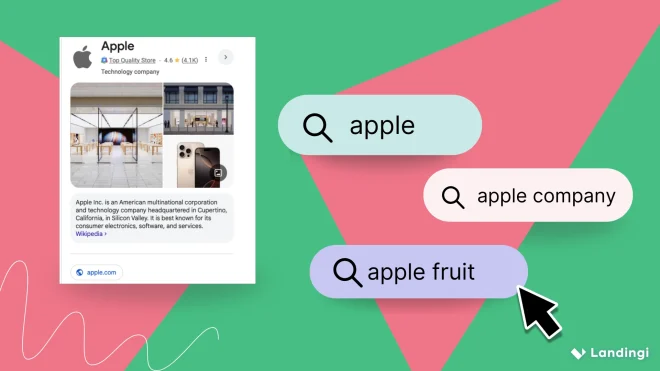Shopify SEO is the process of optimizing your Shopify store to rank higher in Google’s SERPs and attract free, high-intent traffic. It covers everything from technical setup and keyword targeting to content structure and site speed—within the limits of the Shopify platform.
Since Shopify has built-in constraints—like fixed URL paths, duplicate content from tags and variants, and limited control over technical files—SEO here needs a focused strategy. You can’t just copy-paste what works on WordPress.
Effective Shopify SEO optimization means cleaning up collection hierarchies, writing unique product content, using canonical tags, tightening internal linking, and speeding up your site—especially on mobile.
And it’s worth it: organic search still drives 53% of all website traffic (BrightEdge), making it the top-performing traffic source for most stores.
If you want to improve SEO on Shopify, apps won’t cut it alone. You need a smart structure, solid content, and a technically clean site. Done right, SEO for Shopify stores brings not just more clicks—but better customers.

What Is Shopify SEO?
Shopify SEO is a set of practices aimed at helping your Shopify store rank higher in search engines and attract more unpaid traffic.
It’s made for Shopify’s ecosystem. Same goal as always—higher rankings, more clicks, better traffic—but the rules are slightly different.
You’re working inside a box: fixed URL patterns (/products/, /collections/), automatic redirects, and limited access to the backend. That means every SEO win has to be intentional.
Shopify SEO:
- Is technical: fast loading, clean architecture, crawlable pages, canonical tags in the right place.
- Is content-driven: unique product descriptions, smart keyword use, optimized meta data, and internal links that actually make sense.
- Is external: quality backlinks, brand mentions, content syndication—anything that proves your site deserves to rank.
Shopify SEO isn’t a one-size-fits-all checklist. It’s a strategy. One that respects how the platform works, but still speaks Google’s language fluently.
Pair Shopify with AI Landing Pages that speak Google’s language—fast, clean, and built to rank.
Why Is Shopify SEO Important?
Shopify SEO is important because it determines whether your store gets seen—or gets skipped. In a space where thousands of stores are selling similar products, ranking high in Google is a filter for who gets traffic, clicks, and customers.
Search is still the main way people discover products online. Buyers don’t scroll forever—they click what they see first, so if your store doesn’t rank, your products might as well not exist.
It’s also about trust. Users tend to associate top search results with credibility. If your store appears high in the SERPs, you’re instantly seen as more legitimate—before anyone even lands on your page. That perception carries weight, especially in e-commerce, where trust drives conversions.
And then there’s sustainability. While ads can spike traffic, they don’t build momentum. SEO does. Once your pages start ranking, they continue bringing in relevant visitors day after day, without the ongoing cost. That kind of compounding visibility is rare—and powerful.
9 Steps for Improving SEO on a Shopify Store
Improving SEO on a Shopify store means making your site easier for search engines to understand—and more appealing for the people who find it. Here’s how to do it, step by step:
1. Fix the Technical Foundations
Submit your sitemap in Google Search Console, check your robots.txt, and clean up duplicate content with canonical tags.
Example: If you sell a red t-shirt with five size variants, make sure Google sees one main product URL with canonical tags—not five near-identical pages competing with each other.
2. Simplify Your Site Structure
Create a logical hierarchy with clean collections and avoid cluttering the navigation with unnecessary tags or filters.
Example: Instead of linking to /collections/shoes?sort_by=best-selling, use a clean slug like /collections/mens-sneakers with a clear path from homepage > Men > Sneakers.
3. Nail Your Keyword Research
Use tools like Ahrefs, SE Ranking, or even Google’s autocomplete to find what shoppers actually type. Focus on keywords with buying intent.
Example: If someone searches for ‘leather backpack’, they’re browsing. But if they search for ‘buy waterproof leather backpack USA’, that’s bottom-of-funnel—and your product page or landing page better match that.”
4. Write Titles and Descriptions That Work
Include your target keyword early in your title tag and use the description to drive clicks.
Example: A good title tag: “Minimalist Leather Wallet | Free Shipping USA.” A solid meta description: “Slim, RFID-blocking leather wallet built to last. Ships free across the U.S.”

5. Optimize the On-Page Content
Make sure each product and collection page has unique, helpful, keyword-rich copy—not manufacturer boilerplate.
Example: Instead of “100% cotton. Available in blue and black,” write: “This relaxed-fit cotton t-shirt comes in deep blue and classic black—ideal for summer days or layering in winter.”
6. Speed Up and Clean Up
Audit your store with PageSpeed Insights. Remove unnecessary apps and compress large image files.
Example: If you use a carousel that loads five high-res images on mobile, replace it with one static image and lazy-load the rest. A faster first visit can mean the difference between a bounce and a buyer.

7. Earn Real Backlinks
Focus on backlinks from real, relevant sites in your niche. Create link-worthy content others want to share.
Example: Run a comparison blog post like “5 Best Vegan Leather Wallets in 2025” and pitch it to eco-lifestyle blogs to earn natural links.
8. Publish Content That Pulls Its Weight
Write blog posts or guides that match what customers Google before they buy—then link them to your product pages.
Example: A post titled “How to Choose the Right Yoga Mat Thickness” can naturally link to your collection of yoga mats.
9. Use the Right Tools to Scale
Install apps for structured data, broken link alerts, and image optimization—but always monitor their output.
Example: Use the JSON-LD for SEO app to automatically add schema markup, so your product pages qualify for rich results like price, stock status, and review stars.
Together, these steps create a Shopify store that’s easier to find, faster to load, and better at converting search traffic into sales.
FAQ About Shopify SEO
Below are the most common questions merchants ask when improving SEO on their Shopify store.
Can You Do SEO on Shopify?
Yes, you can do SEO on Shopify, and you should. Shopify supports a full range of SEO tactics: you can edit meta titles and descriptions, create custom URLs, set up 301 redirects, add alt text to images, use canonical tags, and submit your sitemap to Google Search Console.
It also includes SEO-friendly features by default, like SSL certificates, mobile-optimized themes, and structured data support. While there are some platform limitations (like fixed URL structures and limited control over certain technical files), you can still implement a complete, competitive SEO strategy directly in Shopify—with no need for extra platforms or plugins.
Reach more countries with Multilanguage Pages that boost international SEO.
What Features Does Shopify Have to Support SEO?
Shopify includes a range of built-in features that give store owners a strong SEO foundation—covering everything from site structure to mobile performance and search appearance.
1. Auto-Generated Sitemap and Robots.txt
Shopify automatically creates and updates your sitemap.xml and robots.txt files to help search engines crawl and index your site. While the sitemap isn’t editable, the robots.txt file can be customized if you need to block specific pages.
2. Canonical Tags for Duplicate Content
To manage duplicate URLs from product variants or filtered collections, Shopify adds canonical tags by default—helping search engines focus on the correct version of each page.
3. SEO-Friendly URLs
Shopify generates clean URLs using product and collection names. You can edit the slugs to include relevant keywords, such as changing /products/blue-shirt to /products/mens-blue-oxford-shirt.
4. Custom Meta Titles and Descriptions
Each page—product, collection, or blog—lets you manually edit the title and meta description. This helps you target key terms and improve click-through rates in search results.
5. Image SEO and Alt Text
Every image upload includes an alt text field. Adding descriptive, keyword-rich alt text boosts image SEO and makes your site more accessible.
6. Mobile-Optimized Themes
Most Shopify themes are fully responsive, offering strong mobile usability—which is a known ranking factor for search engines.
7. Built-in Schema Markup
Shopify themes come with structured data for products (like price, availability, and reviews), which allows your listings to qualify for rich snippets in search results.
8. SSL Certificates by Default
Every Shopify store includes an SSL certificate out of the box. HTTPS encryption builds trust and is a confirmed ranking signal.
9. Easy 301 Redirects
Shopify lets you create 301 redirects without needing technical access. This is critical for preserving SEO value when URLs change or pages are deleted.
10. Google Analytics Integration
You can easily connect Google Analytics to track SEO performance, user behavior, and traffic sources—helping you refine your strategy with data.
These features don’t replace a full SEO strategy, but they do give you a reliable starting point—making it easier to focus on optimization, content, and ranking growth.
Bypass Shopify’s SEO constraints using Landingi’s Builder to design fully flexible, search-optimized pages.
What’s the Role of Landing Pages in Shopify SEO?
Landing pages are built to rank — and convert. They’re focused, goal-driven pages that help your Shopify store show up in search results and turn visitors into customers.
Unlike standard product pages, landing pages let you target super-specific searches. Think “organic baby clothes made in the USA” instead of just “baby clothes.” The more specific the query, the better your chance of getting in front of someone who’s ready to buy.
Example:
You’re launching a new line of ergonomic office chairs. Instead of sending ad traffic to a general chairs collection, you build a landing page titled “Ergonomic Office Chairs for Back Pain Relief.” It includes detailed descriptions, reviews, FAQs, and a clear “Buy Now” button. Google sees the relevance, users feel the clarity — and conversions go up.
This is where landing page SEO comes into play. By optimizing each landing page for a targeted keyword, structuring your content properly, and making sure the page loads fast and looks great on mobile, you boost your chances of ranking higher and driving action.
Landing pages also keep your message tight. One purpose, one offer, one path to action. No clutter. That’s good for search engines — and even better for shoppers.

Where to Find Best Shopify SEO Services
You can find the best Shopify SEO services through specialized agencies, trusted ecommerce marketing providers, and high-rated apps built specifically for the Shopify platform.
Start with agencies that live and breathe Shopify. Companies like Loopex Digital and Search Logistics are known for tailored SEO strategies that go beyond rankings—they focus on traffic that converts. Agencies like OuterBox and Digital Commerce Partners offer deep Shopify expertise, from technical audits to link building, and have real case studies to back it up.
You can also boost your store using apps from the Shopify App Store. Top-rated tools like Smart SEO, Plug In SEO, or AI-powered optimization apps can help automate tasks like meta tag creation, image compression, and structured data setup—ideal if you’re managing SEO in-house.
If you need more than just app support, ecommerce-focused providers like LYFE Marketing, Thrive, and BKA Content offer broader SEO services, including content writing, keyword strategy, and ongoing optimization—all with Shopify in mind.
Before choosing, compare services based on your store’s size, budget, and needs. Look for Shopify-specific experience, read through client reviews, and take advantage of any free audits or strategy calls.
What Are the Best SEO Tools for Shopify?
The best Shopify SEO tools are SEO.AI, TinyIMG, SearchPie, SEOAnt, and SEO King. Together, they cover everything from content and keyword optimization to image compression and technical SEO automation.

SEO.AI is perfect for Shopify stores that need to scale content fast. It helps generate optimized product descriptions, blog posts, and metadata using AI—and even trains on your brand voice. It’s great for merchants juggling large inventories or content-heavy categories.
TinyIMG is your go-to for image SEO. It compresses images without killing quality, improves load speed, and helps clean up alt texts and metadata in bulk. It also adds structured data and supports lazy loading—big wins for Core Web Vitals.
SearchPie offers a full-stack SEO solution with keyword tools, meta tag management, JSON-LD setup, broken link detection, and page speed optimization. If you want one app that does it all without needing five others, this is it.
SEOAnt is especially useful for stores with performance issues or multilingual needs. It supports AMP, compresses images, fixes 404s, and uses AI to optimize SEO across the board—including for international traffic.
SEO King – AI Edition is ideal for dropshippers or stores with tons of SKUs. It uses GPT-3.5 to bulk-generate SEO content and analyze competitors, all while syncing with Google and Bing Webmaster Tools.
| Tool Name | Key Features | Best For |
|---|---|---|
| SEO.AI | AI content creation, real-time scoring, brand voice training | High-SKU stores, large-scale content |
| TinyIMG | Image compression, metadata, alt text, lazy loading | Page speed and image SEO |
| SearchPie | Keywords, meta tags, broken links, speed, JSON-LD | All-in-one SEO coverage |
| SEOAnt | AI SEO, AMP, multi-language, performance tools | Multilingual or slow-loading stores |
| SEO King – AI Edition | GPT-3.5 bulk content, competitor analysis, metadata sync | Dropshippers and large catalogs |
These tools combine automation, AI, and smart optimization to give Shopify stores the edge in organic search—without needing a developer.
What Are the Limitations of Shopify SEO?
The limitations of Shopify SEO include restricted URL structure customization, duplicate content issues, limited technical access, lack of native review features, and minimal control over structured data and sitemaps.
Shopify locks your URLs into a fixed structure—you can customize the slug, but not remove segments like /products/ or /collections/. That limits your ability to create clean, keyword-optimized URLs and can flatten your site’s structure, which isn’t ideal for SEO hierarchy or user experience.
Duplicate content is another concern. Product variants, pagination, and filtered collections often generate multiple URLs pointing to nearly identical content. Shopify uses canonical tags to manage this, but they aren’t foolproof, especially when third-party apps introduce new templates or URL paths.
You also won’t get full control over backend files. Shopify doesn’t give access to .htaccess or let you freely edit your sitemap or robots.txt beyond some basic customization. That means less flexibility for advanced technical fixes or custom crawl instructions.
Another weak spot: there’s no built-in product review system. Reviews are a great source of fresh, keyword-rich user content—but adding them requires third-party apps, which can vary in quality and affect site performance.
Structured data support is basic and tied to your theme. If you want to customize schema markup for rich snippets—like product availability, ratings, or FAQs—you’ll likely need custom code or an app.
And while most Shopify themes are mobile-friendly, slow page speeds can be a problem—especially when apps stack up and images aren’t optimized. That can hurt rankings and frustrate users.
Shopify gives you a solid SEO foundation—but it also comes with platform-level walls. Knowing where those walls are helps you work around them smartly and fill the gaps with the right tools and strategies.
Go from one to 100 SEO pages with Programmatic Landing Pages that multiply your reach without multiplying your work.
Use SEO for Shopify to Improve Traffic on Your Landing Pages
If your online store depends solely on paid ads, you’re limiting its long-term potential. Smart search engine optimization—especially when applied to landing pages—can help your Shopify store attract consistent, high-intent organic traffic.
Landing pages are a powerful part of Shopify SEO because they give you full control over web content. You can build around target keywords, fine-tune meta titles and descriptions, and structure pages in a way that aligns with how search engine crawlers read and rank content. When optimized correctly, landing pages do more than look good—they show up in search results and convert visitors into customers.
That’s where Landingi makes a real difference. Instead of being limited by Shopify’s built-in page editor, Landingi lets you create fully customizable, SEO-optimized landing pages that integrate seamlessly with your store. You get complete control over layout, speed, and structure—everything that matters to search engine algorithms and your audience.
Want to attract more traffic, not just pay for it? Combine Shopify SEO with Landingi’s landing page tools and turn your pages into powerful engines for visibility, clicks, and conversions.






